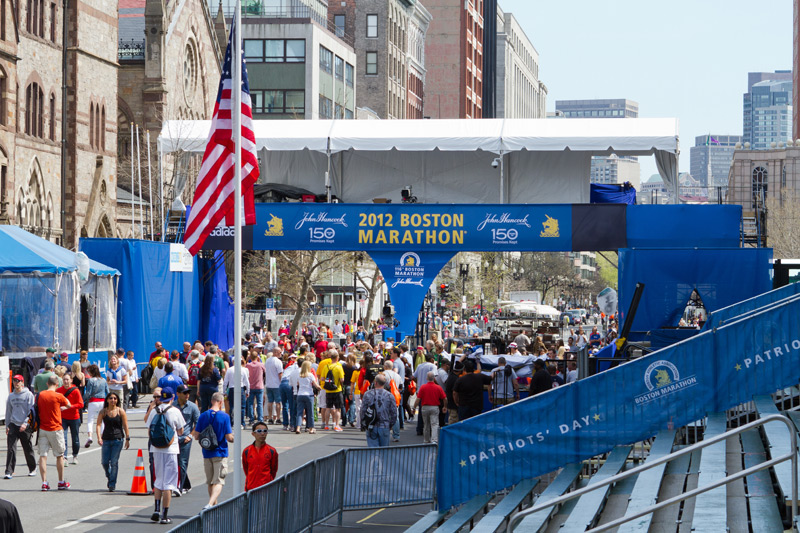On the afternoon of April 15th, in the middle of the annual Boston Marathon, two bombs exploded, killing three people and injuring 180 more. A marathon is a long-distance footrace that stretches 26.2 miles. Many large cities host them, and Boston’s is one of the best-known in the world.
Held each year on Patriot’s Day (a Massachusetts holiday that commemorates the beginning of the Revolutionary War), the 2013 race drew 26,000 runners from more than 60 countries, and half-a-million spectators. More than 17,000 of the participants had already crossed the finish line, just off of Copley Square in the heart of the city, when the bombs exploded. The blasts were so powerful that they blew the windows out of many of the nearby buildings. The area was immediately evacuated and secured as a crime scene. A manhunt began immediately.

National security was heightened. The part of Pennsylvania Avenue that runs in front of the White House was temporarily closed. Planes were grounded. Public transportation in Boston was halted. Many events in the city were canceled, including the symphony and the Boston Red Sox professional baseball game. Because there was more than one bomb, authorities immediately considered it an “act of terror.”
The Search for Suspects
For three days there was no news of a suspect or motive. Then on April 18th, the Federal Bureau of Investigation (FBI) released the identities of two men, brothers, Dzhokhar (19) and Tamerlan Tsarnev (26), whom they believed were responsible for the attacks. That night these two suspects killed police officer Sean Collier on the campus of Massachusetts Institute of Technology (MIT) as they were evading the police. Then the brothers hijacked a car and led police on a chase through the Boston-area neighborhood of Watertown. The suspects engaged in gunfire with police and threw homemade explosives at officers. The extended resistance resulted in the wounding and eventual death of the oldest brother, Tamerlan Tsarnev. Fifteen of the officers were also wounded for injuries sustained during the night’s events.
Dzhokhar Tsarnev escaped the police for nearly 18 hours. Schools and businesses in the suburban neighborhoods surrounding Boston were closed for the day. Local government and police officials asked those in the immediate area to stay inside their houses. Later that evening, the suspect was found hiding inside of a boat parked in driveway. Dzhokhar Tsarnev was found injured, possibly by self-inflected wounds. The police took him to the hospital where he is in serious condition.
Why and What Now?
There has been a lot of news coverage about the suspects, including speculation on what led them to try and harm people at the Marathon. The brothers are from the Kalmyk Autonomous Soviet Socialist Republic located in Russia. They immigrated to the United States in 2002 with their parents, settling in Boston. The eldest brother, Tamerlan, was married to an American woman and had a young child. In recent years, he became more devout in his Muslim religion, but became attracted to those supporting more radical extremists. The FBI interviewed Tamerlan in 2011, but found no evidence of his involvement with terrorist activity at that time. Many feel that Dzhokhar was heavily influenced by his brother’s beliefs.
A special court hearing was held at the surviving suspect’s bedside because he is seriously injured. He was officially charged with “using and conspiring to use a weapon of mass destruction.” This charge usually carries the possibility of the death penalty, although the state of Massachusetts does not have the death penalty. The defendant had not yet entered a formal plea (usually “guilty” or “not guilty”). The hearing is set for May 31st. Because he became a citizen in 2012, he cannot be tried as an “enemy combatant” against the United States.
